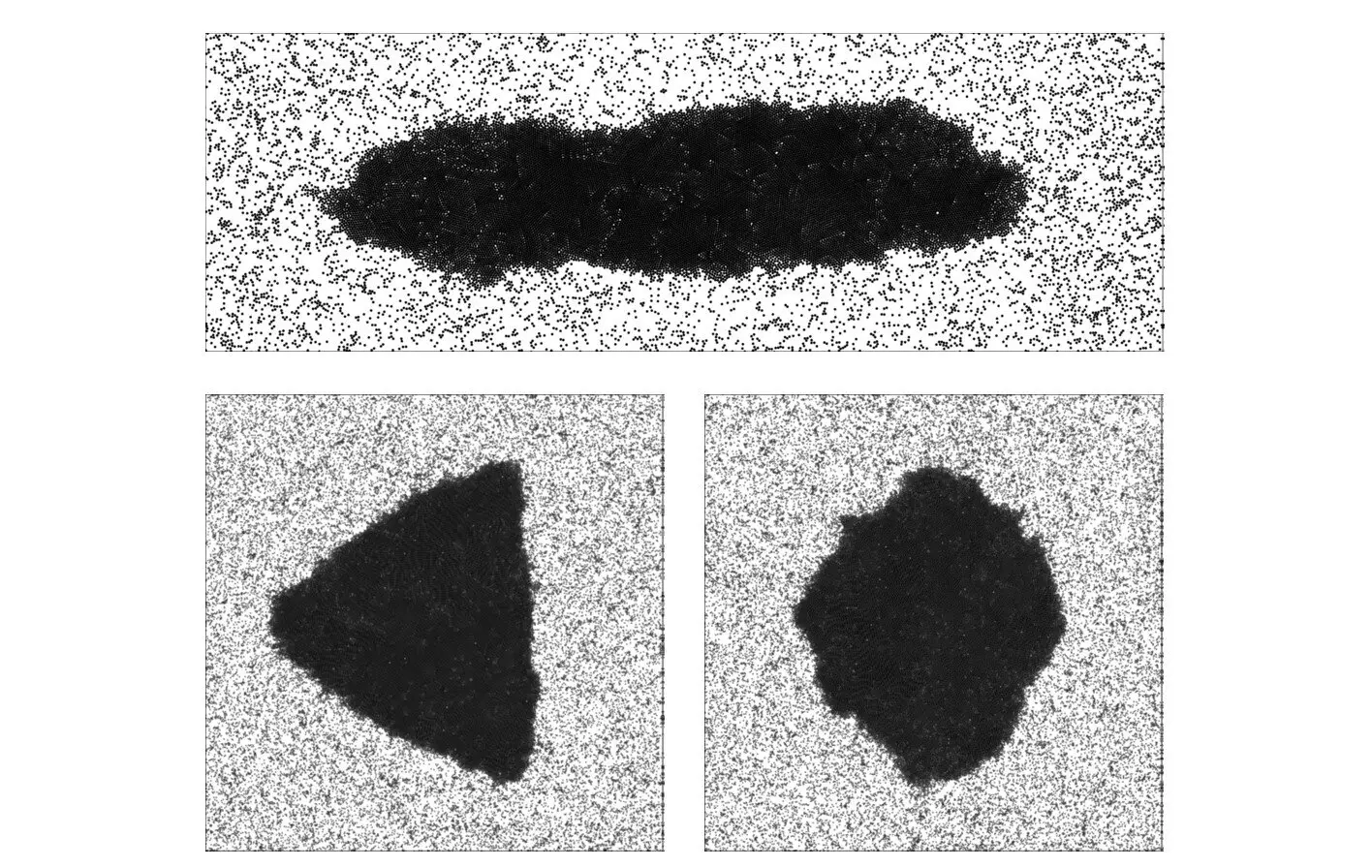Investigating systems consisting of self-propelled particles, commonly referred to as active particles, has become a rapidly growing area of research. While theoretical models often assume that the swimming speed of these particles remains constant, it is crucial to consider scenarios where the propulsion speed depends on the orientation. This is especially relevant for particles generated in experiments using ultrasound for medical applications. Prof. Raphael Wittkowski from the University of Münster (Germany) and Prof. Michael Cates from the University of Cambridge (United Kingdom/England) have jointly conducted a collaborative project to explore the impact of orientation-dependent swimming speed on the behavior of active particle systems. Their innovative approach involved a combination of computer simulations and theoretical derivations. The study results, published in the journal Physical Review Letters, have shed light on several new effects that arise due to this dependency.
One of the intriguing aspects of systems consisting of active particles is the spontaneous formation of clusters. Remarkably, even in scenarios where individual particles do not exhibit any attractive forces, clusters can still emerge. In their simulations, the researchers made an unexpected observation while tracking the movement of particles within the clusters. While it was anticipated that particles would remain relatively static within the cluster, the study revealed an opposite behavior. “Normally, on a statistical average, the particles in such clusters simply stay where they are,” explains lead author Dr. Stephan Bröker from the Institute of Theoretical Physics at the University of Münster. However, the physicists discovered a different outcome in their investigation. The particles were constantly in motion, with some moving out of the cluster on one side and re-entering it on the other, creating a continuous flow of particles. This discovery challenges previous assumptions and adds a new dynamic to the behavior of active particle clusters.
In addition to the unexpected movement within the clusters, the study also revealed shape dependence on the strength of the orientation’s influence on the particles’ propulsion speed. Unlike typical clusters in systems of active particles, which often exhibit circular shapes, the shape of clusters formed by the particles examined in this study varied significantly based on the orientational effects. This variation allowed for the creation of clusters in various shapes, such as ellipses, triangles, and squares. “Theoretically, at least, we can make the particles arrange themselves into any shape we want,” explains co-lead author Dr. Jens Bickmann. This finding holds practical importance as it provides researchers with the ability to manipulate and control the shape of active particle clusters, enabling novel applications and potential advancements in fields such as materials science and biomedicine.
The ability to control and shape clusters of active particles opens up numerous possibilities in different areas of research and technology. By understanding how the speed of individual particles depends on their orientation, experimentalists can employ these findings to their advantage. For instance, precise control over active particle clusters could be utilized in the field of nanotechnology, allowing for the fabrication of intricate nanostructures. Furthermore, this newfound ability to manipulate cluster shapes has implications for swarm robotics, where clusters of active particles can emulate coordinated behavior observed in social insects. By arranging particles into desired shapes, researchers may be able to engineer more efficient and intelligent swarms.
This collaborative study led by Prof. Raphael Wittkowski and Prof. Michael Cates has provided valuable insights into the behavior of systems consisting of active particles. The examination of particles with orientation-dependent propulsion speed has unraveled new phenomena in the formation and movement of clusters. Furthermore, the study has demonstrated that the shape of these clusters can be tailored by manipulating the orientation’s influence on particle speed. This breakthrough has significant implications across multiple fields, from nanotechnology to swarm robotics, where precise control over cluster shape and behavior can lead to innovative applications and advancements. As research in the field of active particles continues to evolve, these findings undoubtedly serve as a foundation for future discoveries and practical implementations.


Leave a Reply